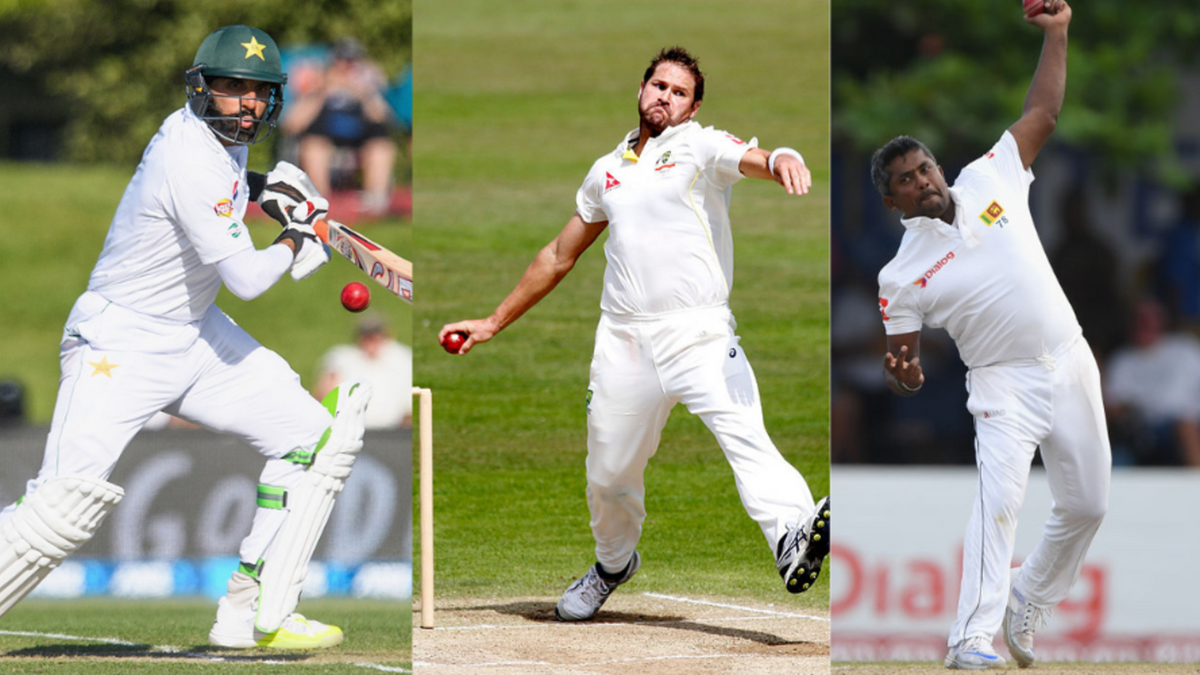
Here is an XI made up of the players who, for different reasons, missed out on forging a successful Test career in their early years yet emerged to make a name for themselves in the latter half of their career.
This list is inspired by the exploits of Nkrumah Bonner, who made his Test debut in his thirties, making an immediate impact for West Indies with two hundreds in his first 10 Tests at an average over 45.
Chris Rogers
2,015 runs @ 42.87, HS 173, 5 hundreds, 14 fifties
Chris Rogers is nicknamed Bucky after the famous science fiction character, Buck Rogers. Now Rogers wasn’t in suspended animation for almost four centuries like the fictional Buck, but one suspects that is what the wait for an Australia spot must have felt to him. He played a solitary Test in 2008 before establishing himself in the side in his late thirties. 15 of his 25 Tests came against England, against whom he scored four of his five hundreds.
For almost a decade after his first-class debut, there was no spot for the opener because of Matthew Hayden and Justin Langer. He made the most of his extended opportunity in the side when it was eventually afforded to him.
Nkrumah Bonner
700 runs @ 46.66, HS 123, 2 hundreds, 3 fifties
A first-class batting average under 30 didn’t promise much before his Test debut in 2021, but Bonner has quickly established himself as an important member of this West Indies side. After 10 games, he averages 45 in Test cricket.
Adam Voges
1,485 runs @ 61.87, HS 269*, 5 hundreds, 4 fifties
Adam Voges took almost eight years after making his ODI debut to win a Test cap at 35, but made the most of his eighteen months with Australia Test team. He scored a hundred in his first Test against West Indies, becoming the oldest person to score a century on Test debut.
He had an ordinary Ashes 2015, but made the best use of batting friendly conditions on offer at home in 2015/16. His Bradman-esque run saw him accumulate 660 runs at an average of 165 in the season.
He continued this golden run during the away tour in New Zealand, adding 309 runs in the Trans-Tasman trophy. He finished his Test career with a Test average over 60.
Fawad Alam
953 runs @ 47.65, HS 168, 5 hundreds, 2 fifties
When 23, Alam hit 168 on his debut against Sri Lanka in 2009. The score remains his best in international cricket. Since then, he has played only 15 Tests.
But at one stage, for reasons best known to Pakistan cricket authorities, it seemed that there was little chance that his Test career would extend beyond the three games he played in 2009.
However, he did get an opportunity to prove himself in 2020 and he has done wonders since. He has scored hundreds across continents and conditions, scoring runs in New Zealand, Zimbabwe, Pakistan, and West Indies. The player is ‘only’ 36, and one hopes that he can go on to forge a Misbah-esque career in the years to come.
Misbah-Ul-Haq
5,222 runs @ 46.62, HS 161*, 10 hundreds, 39 fifties
Misbah-ul-Haq’s infamous shot in the dying stages of the 2007 World T20 final might have spun a T20 revolution into existence, but his resilient 43 which nearly won Pakistan the final and other contributions throughout the tournament, helped facilitate his return to the Pakistan set-up.
While Misbah’s first run as an international cricketer comprised of sporadic appearances for Pakistan, he became a regular in the Pakistan set-up during the second half of his career. His Test career continued until weeks before his 43rd birthday.
Michael Hussey
6,235 @ 51.52, HS 195, 19 hundreds, 29 fifties
Michael Hussey was a run-machine in domestic cricket circles during the 90s and 2000s, but found it tough to make it into that world-class Australia line-up. When he did find a place in the mid-2000s, Hussey made up for lost time.
He was already a valued member of the ODI set-up before his Test debut and he showed similar form in the baggy green. In his first two years as a Test cricketer, he scored runs at an average of 79.85, with five hundreds to his name. There was a fall in his numbers in subsequent years, but he still remained a major contributor for Australia, finishing with an average of over 50.
Brad Haddin
3,266 @ 32.98, HS 169, 4 hundreds, 18 fifties, 262 catches, 8 stumpings
Brad Haddin was Australia’s long-time back-up keeper with sporadic appearances for the national side during the tenure of Adam Gilchrist. Soon after Gilchrist’s retirement, Haddin got a chance with the Australia Test set-up and remained an important member of the side up until his retirement.
Ryan Harris
113 wickets @ 23.52, BBI 7-117, 5 five-fors
Ryan Harris had everything going against him yet managed to carve a superb Test career for himself. He started out late for a fast bowler, had an injury-riddled career but was Australia’s go-to man in his five-year international stay.
The reason for it was his pace with which he could get the better of any opponent, and his accuracy – as his economy of 2.78 attests. And there was always the near-perfect ball in his armoury, such as the one he bowled to clean up Alastair Cook.
Saeed Ajmal
178 wickets @ 28.1, BBI 7-55, 10 five-fors
Saeed Ajmal certainly made an impact in his relatively short international career.
His finest run came against a strong England side at UAE in 2012. England had recently won the Ashes in 2010/11 and decimated India at home in 2011. They came to UAE with great expectations, but lost all the three Tests against Pakistan. Ajmal picked 24 wickets at an average of 14.7 across this series.
Rangana Herath
433 wickets @ 28.07, BBI 9-127, 34 five-fors
Rangana Herath’s Test debut came all the way back in 1999, in what was a rare series loss for the mighty Australia side. He had to wait in the wings behind Muttiah Muralitharan for much of the next decade before he really owned the role of the side’s primary spinner.
He made up for the lost years pretty quickly, and delivered for his side regularly until his late 30s. He ended up as the most successful left-arm Test spinner in the game.
Chris Martin
233 wickets @ 33.81, BBI 6-26, 10 five-fors
The other fast bowler in this XI is Chris Martin, a bowler who well and truly established himself in the New Zealand side in his 30s.
He led the New Zealand attack on a number of occasions in the mid and late 2000s, and helped them to some great wins. One of these included his brilliant 11-180 scripting a nine-wicket victory against South Africa at Auckland.








